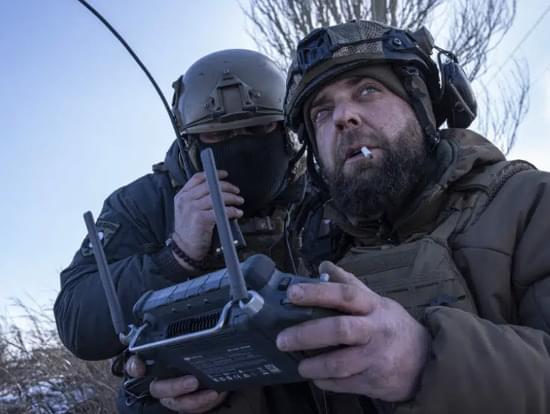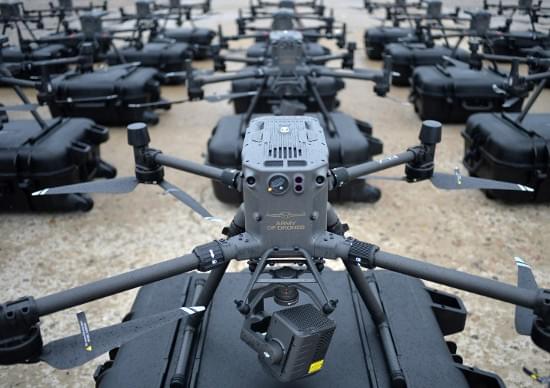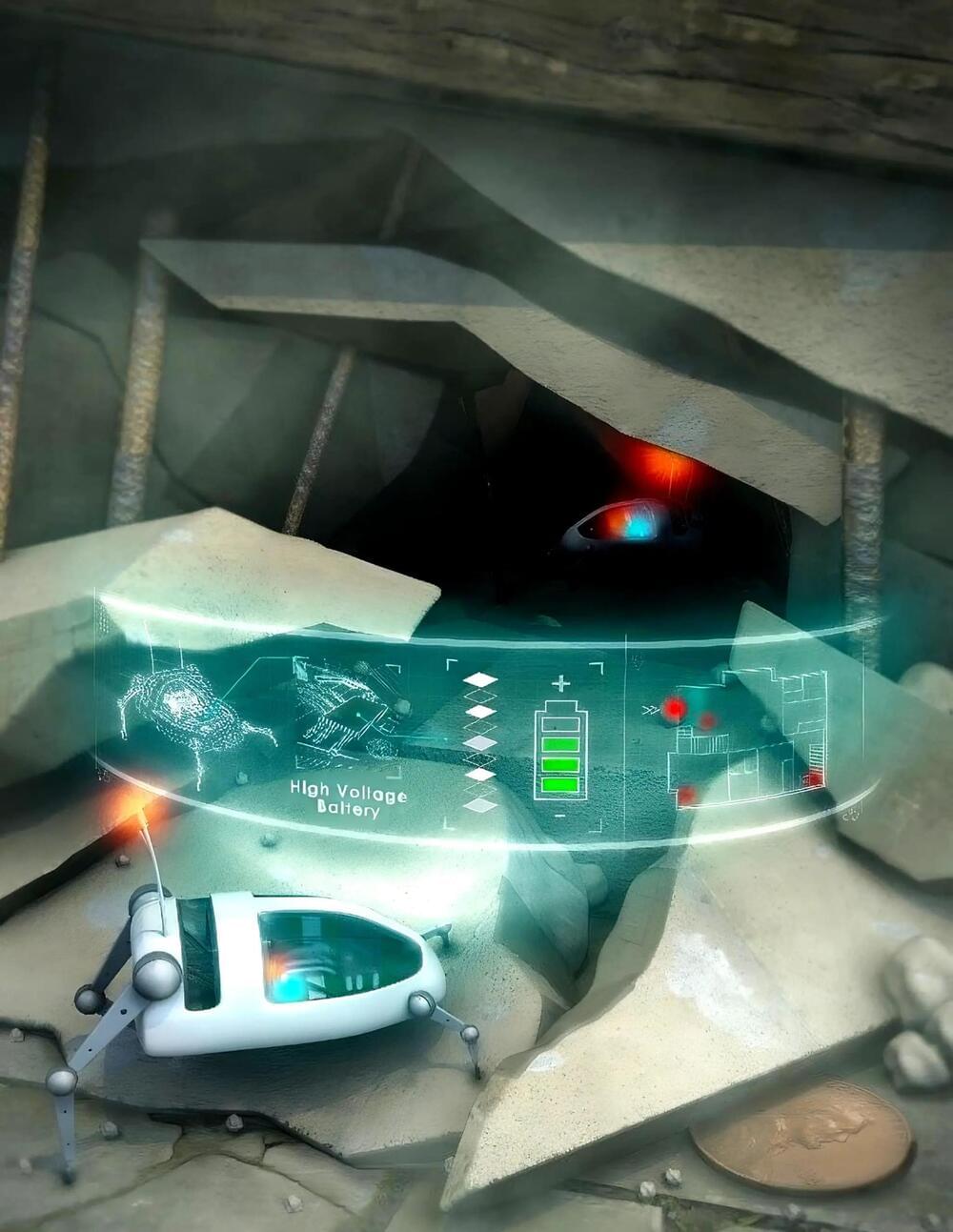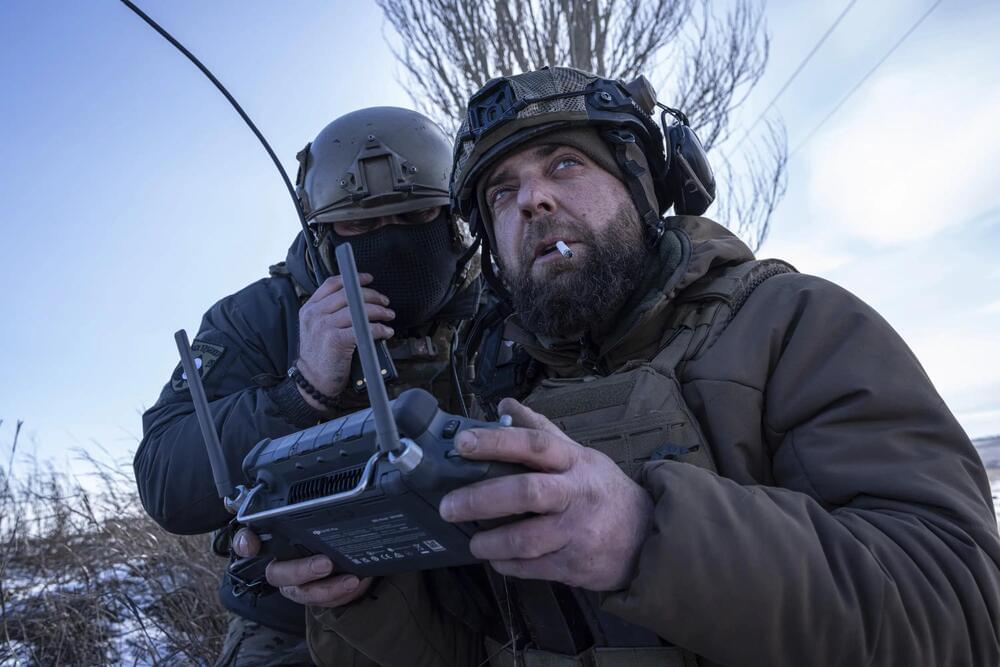Scientists once thought their structures impossible. Now, the discovery of the oldest man-made quasicrystal could expand the world of nuclear forensics.



The brain signals successfully directed the robodogs toward a number of locations that the human controller picked “telepathically” by imagining them.
The Australian military is reportedly testing a unique artificial intelligence (AI) “brain robotic interface” to control “robodogs” synced with troopers’ minds.
The army “is exploring the use of brain signals to control robotic and autonomous systems.” reads the video description.
Australian Army.
The breakthrough AI allows soldiers to control these robot dogs or ‘robodogs’ using advanced digital “telepathy,” according to a video released by the Australian army last week.


Quote:
Putin also said that Russia would suspend its participation in a treaty aimed at keeping a lid on nuclear weapons expansion. The so-called New START Treaty was signed by Russia and the U.S. in 2010. It caps the number of long-range nuclear warheads they can deploy and limits the use of missiles that can carry atomic weapons.
Putin said Tuesday in a major address that Russia was not fully withdrawing from the treaty yet. He said Russia must stand ready to resume nuclear weapons tests if the US does so.
Russian President Vladimir Putin accused Western countries Tuesday of igniting and sustaining the war in Ukraine, refusing any blame for Moscow almost a year after the Kremlin’s invasion of its neighbor that has killed tens of thousands of people.
In his long-delayed state-of-the-nation address, Putin cast his country — and Ukraine — as victims of Western double-dealing and said it was Russia, not Ukraine, fighting for its very existence.
“We aren’t fighting the Ukrainian people,” Putin said in a speech days before the war’s first anniversary on Friday. Ukraine “has become hostage of the Kyiv regime and its Western masters, which have effectively occupied the country.”
Andrew Strominger is a theoretical physicist at Harvard. Please support this podcast by checking out our sponsors:
- Eight Sleep: https://www.eightsleep.com/lex to get special savings.
- Rocket Money: https://rocketmoney.com/lex.
- Indeed: https://indeed.com/lex to get $75 credit.
- ExpressVPN: https://expressvpn.com/lexpod to get 3 months free.
EPISODE LINKS:
Andrew’s website: https://www.physics.harvard.edu/people/facpages/strominger.
Andrew’s papers:
Soft Hair on Black Holes: https://arxiv.org/abs/1601.00921
Photon Rings Around Warped Black Holes: https://arxiv.org/abs/2211.
PODCAST INFO:
Podcast website: https://lexfridman.com/podcast.
Apple Podcasts: https://apple.co/2lwqZIr.
Spotify: https://spoti.fi/2nEwCF8
RSS: https://lexfridman.com/feed/podcast/
Full episodes playlist: https://www.youtube.com/playlist?list=PLrAXtmErZgOdP_8GztsuKi9nrraNbKKp4
Clips playlist: https://www.youtube.com/playlist?list=PLrAXtmErZgOeciFP3CBCIEElOJeitOr41
OUTLINE:
0:00 — Introduction.
1:12 — Black holes.
6:16 — Albert Einstein.
25:44 — Quantum gravity.
29:56 — String theory.
40:44 — Holographic principle.
48:41 — De Sitter space.
53:53 — Speed of light.
1:00:40 — Black hole information paradox.
1:08:20 — Soft particles.
1:17:27 — Physics vs mathematics.
1:26:37 — Theory of everything.
1:41:58 — Time.
1:44:24 — Photon rings.
2:00:05 — Thought experiments.
2:08:26 — Aliens.
2:14:04 — Nuclear weapons.
SOCIAL:
- Twitter: https://twitter.com/lexfridman.
- LinkedIn: https://www.linkedin.com/in/lexfridman.
- Facebook: https://www.facebook.com/lexfridman.
- Instagram: https://www.instagram.com/lexfridman.
- Medium: https://medium.com/@lexfridman.
- Reddit: https://reddit.com/r/lexfridman.
- Support on Patreon: https://www.patreon.com/lexfridman

A persistent technological challenge has been the difficulty in scaling down the electrochemical performance of large-format batteries to smaller, microscale power sources, hindering their ability to power microdevices, microrobots, and implantable medical devices. However, researchers at the University of Illinois Urbana-Champaign have overcome this challenge by developing a high-voltage microbattery (9 V) with exceptional energy and power density, unparalleled by any existing battery design.
Material Science and Engineering Professor Paul Braun (Grainger Distinguished Chair in Engineering, Materials Research Laboratory Director), Dr. Sungbong Kim (Postdoc, MatSE, current assistant professor at Korea Military Academy, co-first author), and Arghya Patra (Graduate Student, MatSE, MRL, co-first author) recently published a paper detailing their findings in Cell Reports.
<em>Cell Reports</em> is a peer-reviewed scientific journal that published research papers that report new biological insight across a broad range of disciplines within the life sciences. Established in 2012, it is the first open access journal published by Cell Press, an imprint of Elsevier.
Go to https://nordpass.com/isaacnordpass and use code isaacnordpass at the checkout to get additional 1 month for FREE!
If travel to other realities and multiverses is possible, then so is conflict between them, but how would a multiversal war be fought?
Visit our Website: http://www.isaacarthur.net.
Join Nebula: https://go.nebula.tv/isaacarthur.
Support us on Patreon: https://www.patreon.com/IsaacArthur.
Support us on Subscribestar: https://www.subscribestar.com/isaac-arthur.
Facebook Group: https://www.facebook.com/groups/1583992725237264/
Reddit: https://www.reddit.com/r/IsaacArthur/
Twitter: https://twitter.com/Isaac_A_Arthur on Twitter and RT our future content.
SFIA Discord Server: https://discord.gg/53GAShE
Listen or Download the audio of this episode from Soundcloud: Episode’s Audio-only version: https://soundcloud.com/isaac-arthur-148927746/multiverse-warfare-quantum-mania.
Episode’s Narration-only version: https://soundcloud.com/isaac-arthur-148927746/multiverse-war…ation-only.
Credits:
Multiverse Warfare and Quantum Mania.
Science & Futurism with Isaac Arthur.
Episode 382, February 16, 2023
Written, Produced & Narrated by Isaac Arthur.
Editors:
David McFarlane.
Briana Brownell.
Lukas Konecny.
Graphics:

THE HAGUE, Netherlands (AP) — The United States launched an initiative Thursday promoting international cooperation on the responsible use of artificial intelligence and autonomous weapons by militaries, seeking to impose order on an emerging technology that has the potential to change the way war is waged.
“As a rapidly changing technology, we have an obligation to create strong norms of responsible behavior concerning military uses of AI and in a way that keeps in mind that applications of AI by militaries will undoubtedly change in the coming years,” Bonnie Jenkins, the State Department’s under secretary for arms control and international security, said.
She said the U.S. political declaration, which contains non-legally binding guidelines outlining best practices for responsible military use of AI, “can be a focal point for international cooperation.”

To create is human. For the past 300,000 years we’ve been unique in our ability to make art, cuisine, manifestos, societies: to envision and craft something new where there was nothing before.
Now we have company. While you’re reading this sentence, artificial intelligence (AI) programs are painting cosmic portraits, responding to emails, preparing tax returns, and recording metal songs. They’re writing pitch decks, debugging code, sketching architectural blueprints, and providing health advice.
Artificial intelligence has already had a pervasive impact on our lives. AIs are used to price medicine and houses, assemble cars, determine what ads we see on social media. But generative AI, a category of system that can be prompted to create wholly novel content, is much newer.